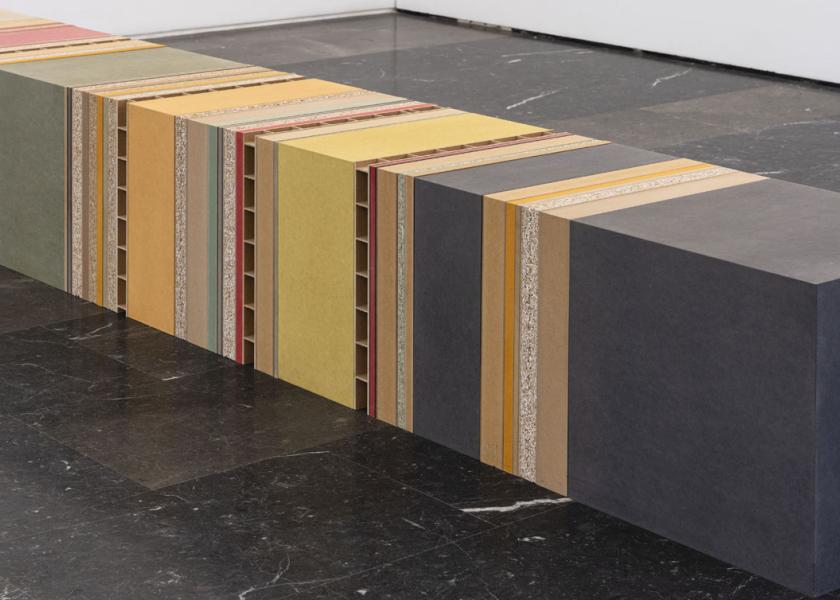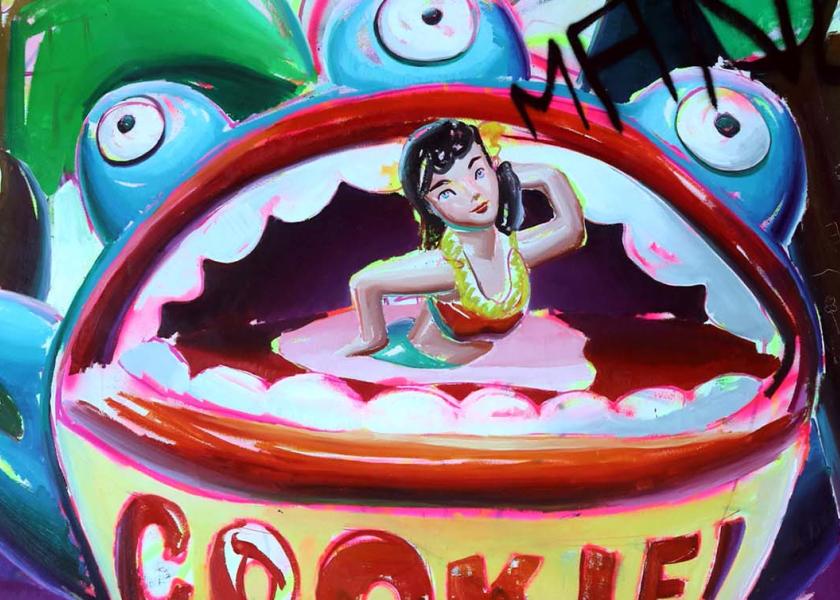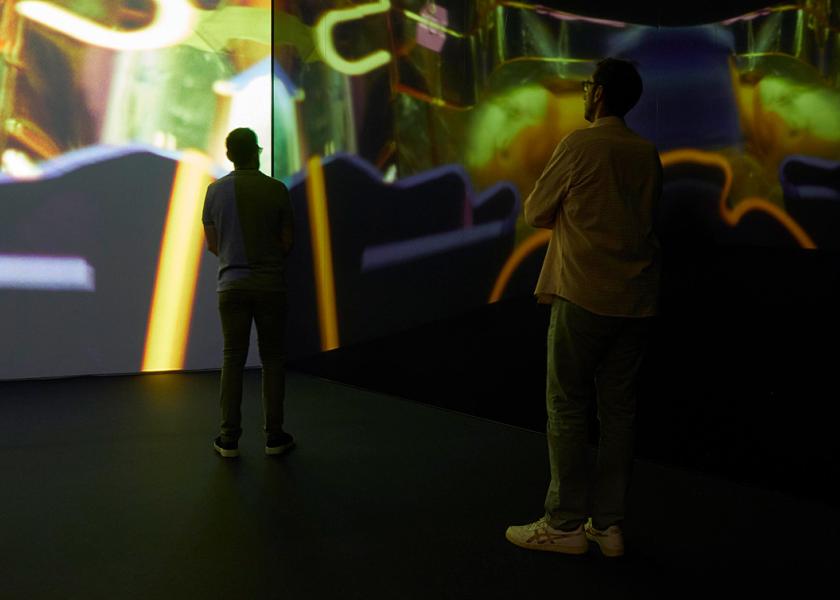Current Spanish painting
The validity of the Spanish paintbrush
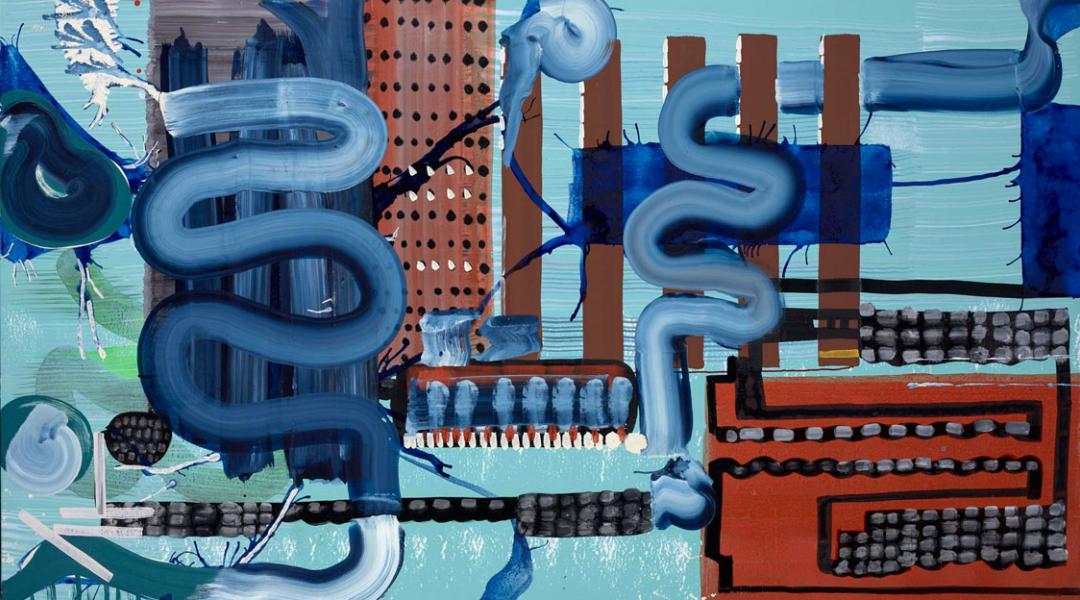
Goya, Velázquez, Murillo, Sorolla, Dalí, Picasso... Historically, Spanish painting has been renowned around the world. What about now? Who inherited the talent of those great masters? Coinciding with a new edition of ARCO, the largest contemporary art fair in Spain, we focus on a series of artists that enjoy both national and international recognition.
During the Spanish Golden Age, a period that usually spans between 1492 and 1659, Spanish art bloomed. It was a time for figures like Cervantes, Lope de Vega or Quevedo, associated to writing, but also to painting, like Velázquez, Zurbarán or Murillo. During the following centuries, there were others like Goya, Sorolla or Picasso. Names that still echo around the world today. Time, more so in art than in any other field, puts everyone in their place, but that doesn’t stop us from admiring the work of contemporary painters whose talent has been recognised both in Spain and abroad. This is exactly what we’re going to do, by taking advantage of ARCO’s 42nd edition, the fair that has hosted and introduced many of them in the last decades. Discover some of the greatest Spanish painters of today below.
Luis Gordillo
He was going to become a lawyer, but his true vocation has always been art. For this reason, he dropped out of law school and decided to study Fine Arts. This was the beginning of a career that, after more than half a century of work, has turned him into an internationally and nationally renowned artist: National Plastic Arts Award (1981), Gold Medal of Merit in the Fine Arts (1996), as well as Hijo Predilecto de Andalucía (2012). Connected to vanguard art after travelling to Paris at the end of the 1950s, his work has swayed between abstraction and figurative representation, showing great interest in psychoanalysis since the 1970s.
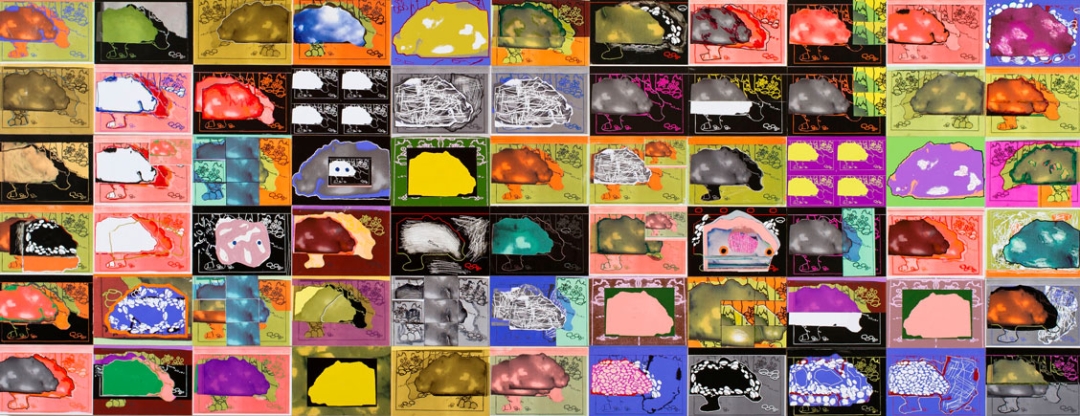
‘Transmigración de almas’, a piece by Luis Gordillo. © Luis Gordillo
Soledad Sevilla
During the 1970s, when pop art was in vogue around the world, this Valencian artist decided to set herself apart and walk the path of geometric abstraction, specifically the one discovered by pop art artists like François Morellet or Victor Vasarely, whom she admired when she started out. From large format paintings she made the leap to installations, moving towards architecture and sculpture. In 2020, she received the Velázquez Award for Plastic Arts, a recognition that tops off a career that, as she herself has admitted on occasion, hasn’t been easy due to being a woman.
Antonio López
His uncle, also a painter, introduced him to the world of art and, over time, he turned into the main hyperrealist painter in Spain. His precise and meticulous brush strokes are amazing, creating works that, in many cases, look like photographs. His creative process, captured by director Víctor Erice in the documentary El sol del membrillo, is very, very slow. In fact, one of his most well-known paintings, La familia de Juan Carlos I, took him a whopping twenty years. In 2008, the Museum of Fine Arts in Boston devoted a solo exhibition to him, proof of this Manchegan’s impact on the world.
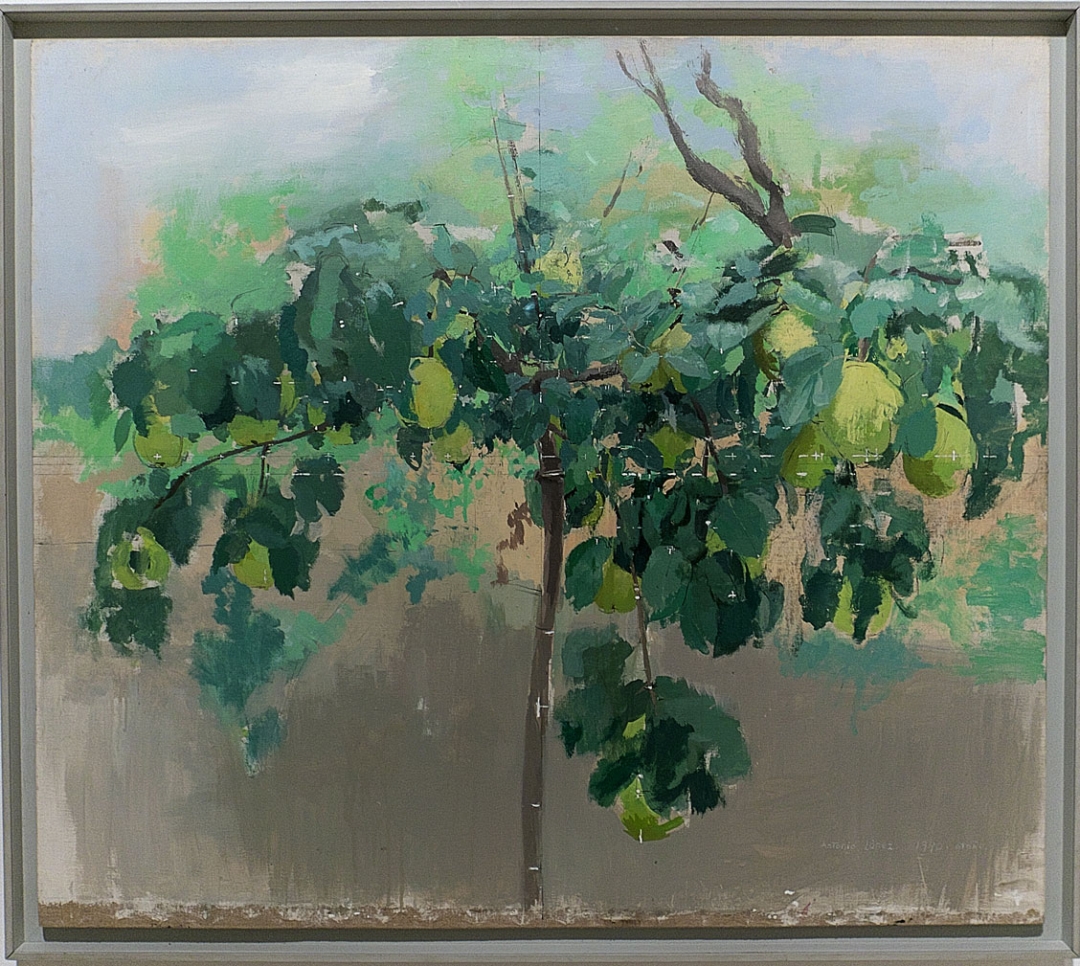
‘Membrillero’, a piece by Antonio López. © Fundación Fondo de Cultura de Sevilla
Miquel Barceló
Alongside sculptor Jaume Plensa, he’s the most internationally-renowned —and sought-after— Spanish artist. In 2011, his piece Faena de muleta sold at Christie’s in London for more than 4.4 million euros. He’s also the author of the cupola in the United Nations Human Rights Room, located in the Palace of Nations in Geneva (Switzerland). Close to neo-expressionism, experimentation is the driving force behind his work, and his interventions on architectural elements are particularly noteworthy. Africa, a continent where he had his own workshop, and the Mediterranean have had a big impact on his work.
Lita Cabellut
Born in Los Monegros (Huesca) and raised in Barcelona, she has lived in The Hague (the Netherlands) since the age of nineteen. Since then, she’s made a name for herself in the world of art, becoming one of the most internationally sought-after living Spanish artists. Her art, a cascading force that captures the chiaroscuros of the world through a lyrical gaze —society’s outcasts feature in many of her works—, doesn’t limit itself exclusively to canvas, but transcends it: sculpture, photography, video... She’s been compared to masters like Francis Bacon or Jackson Pollock.
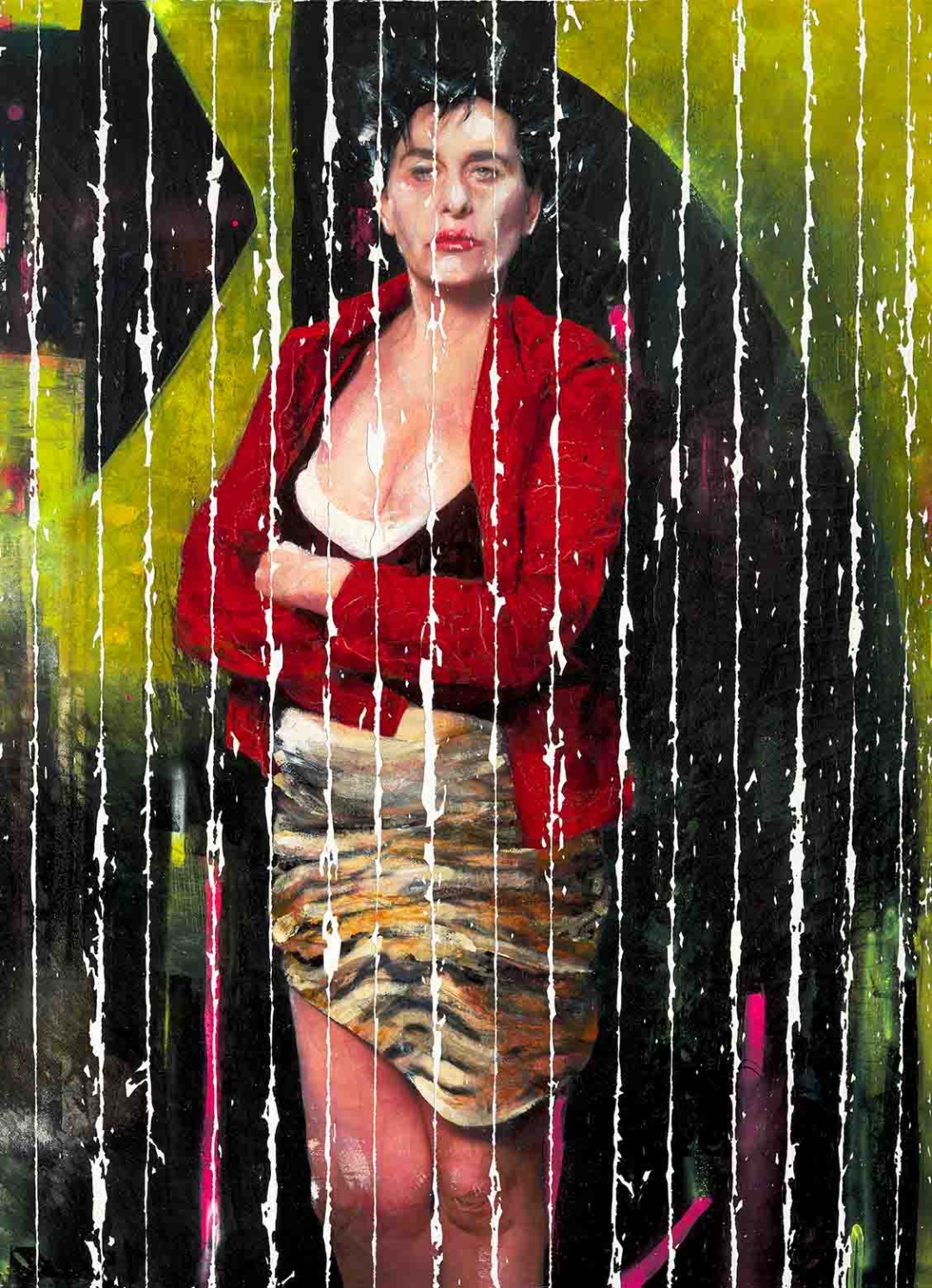
‘Katja’, a piece by Lita Cabellut. © Lita Cabellut
Juan Uslé
New York, Berlin, Venice, Paris, London and dozens more cities around the world have hosted exhibitions by this artist from Cantabria. In fact, the Big Apple, where he received a grant at the beginning of the 1980s, was fundamental in the development of his work. A work that, originally connected to the North-American abstract expressionism of artists such as Willem de Kooning, won him the National Plastic Arts Award in 2002. Incidentally, in 2014 he was commissioned the design of the Roland Garros poster, a tennis Grand Slam.
Alfonso Albacete
In 1979, the walls of the Egam gallery in Madrid bore witness to the first big success of this artist from Málaga. And, in May 2022, he was named academic of Fine Arts. “He has fiercely defended painting at times when it was questioned by radical stances,” explained painter Jordi Teixidor during the presentation of his candidacy. He’s a strong advocate for artists’ values and their role in society. Although he studied Architecture, which can be perceived in the composition of his pieces, in the end he chose painting, developing his own unique style full of colour which sways between figurative and abstract.
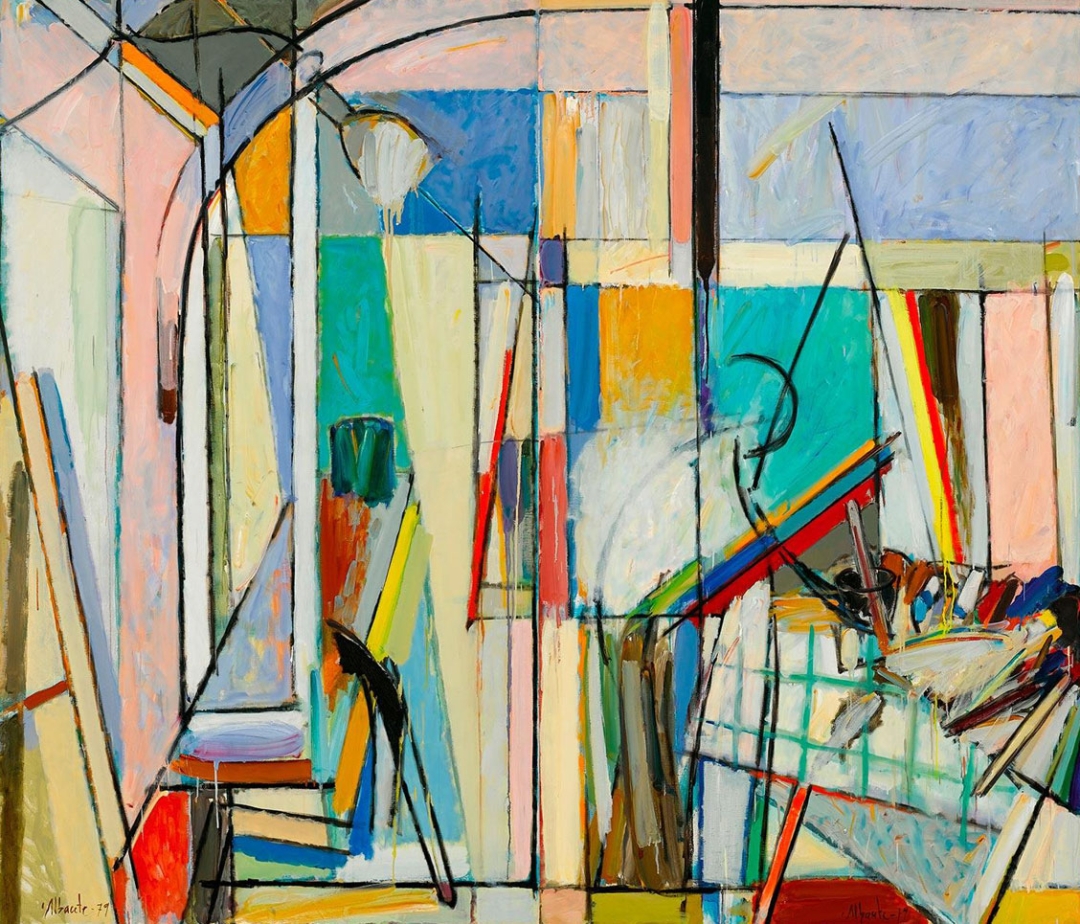
‘En el estudio’, a piece by Antonio Albacete. © Fundación Juan March
Manolo Valdés
Social and political commitment, together with an ironic sense of humour, have featured in the work of this Valencian artist, specialised in painting and sculpture. In 1964, alongside Juan Antonio Toledo and Rafael Solbes, he founded Equipo Crónica, a highly influential artistic group during the final years of Francoism and the subsequent transition towards democracy. During that period, his works grew closer to pop art and condemned the country’s political situation and were inspired by classical figures from Spanish art like Velázquez or Goya. He moved to New York in 1989, where he still lives.
Abraham Lacalle
This Andalucian artist started to work in the 1980s and was soon signed by the prestigious Marlborough gallery, with headquarters in cities like London or New York. His paintings, which have been recognised by the international art market, feature a vivid colour palette, reminiscent of fauvism [an art movement that emerged in France at the beginning of the 20th century characterised by strong colours]. In recent years, he has focused on landscapes and his conflictive relationship with human beings.
